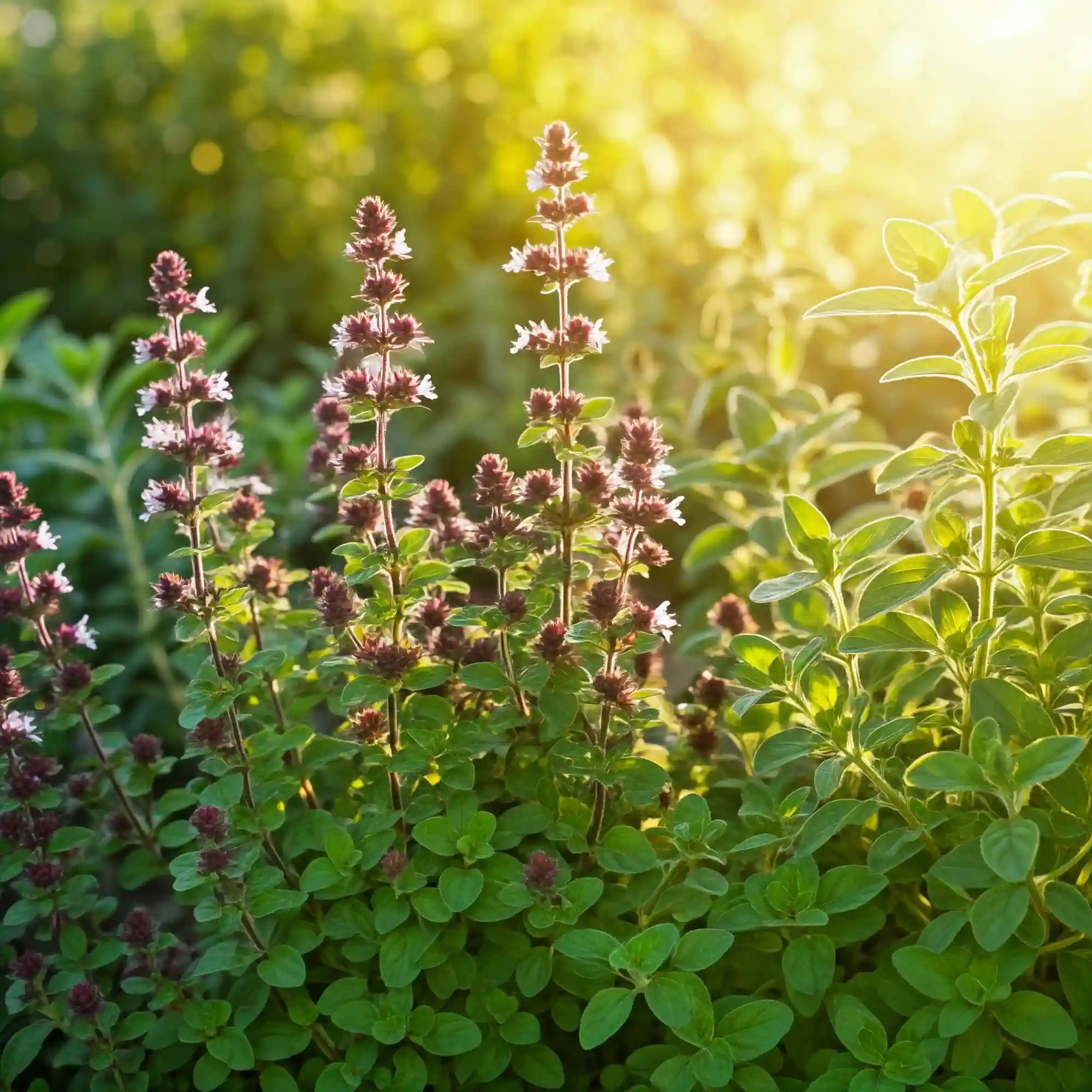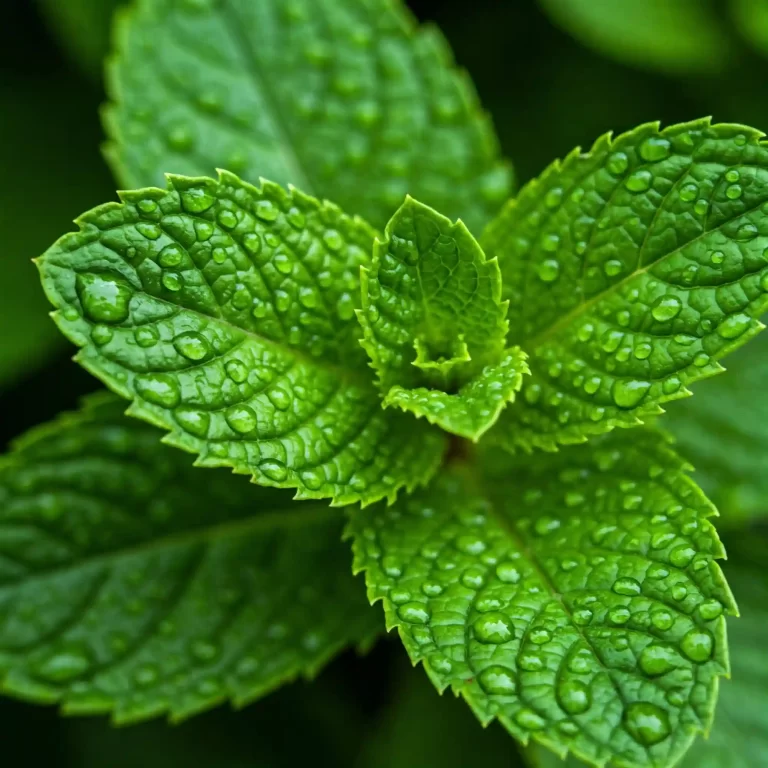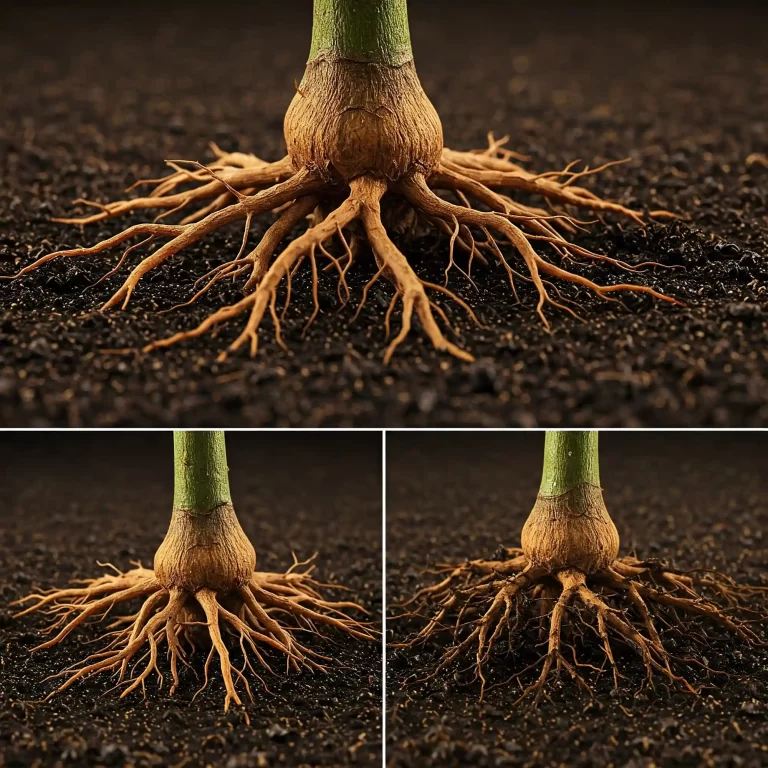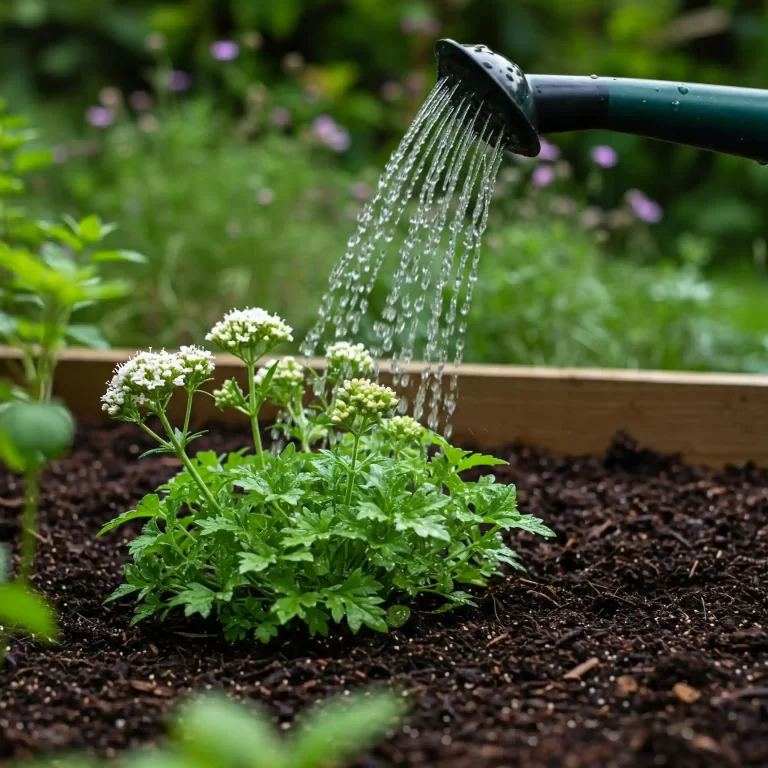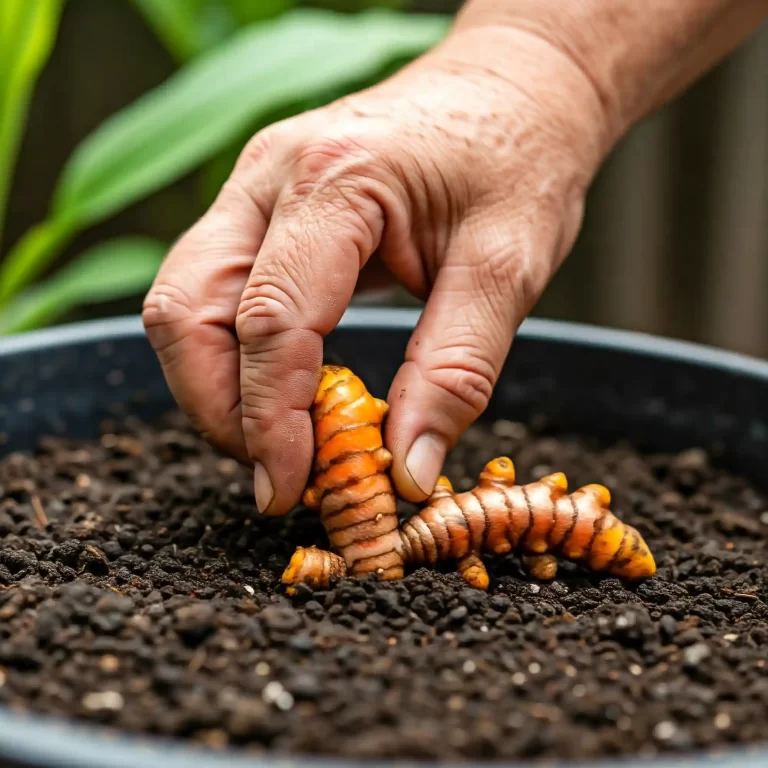Have you ever considered adding a touch of history and fragrance to your garden? Perhaps you’ve heard whispers of an herb with aromatic leaves and a rich past, but you’re unsure where to begin. Many gardeners I’ve encountered share a common desire: to cultivate unique herbs like alecost (Tanacetum balsamita), yet they often find themselves searching for clear, concise guidance. From seed germination to pest control, the challenges can seem daunting. I understand this frustration, and that’s precisely why I’ve crafted this comprehensive guide on How to Grow Alecost Herbs. This isn’t just a surface-level overview; I’m here to provide you with the knowledge and insights you need to ensure your alecost plants not only survive but flourish. With years of experience cultivating various herbs, including alecost, I’m excited to share my expertise with you.
Alecost, also known as Costmary, Bible leaf, or balsam herb, is a captivating perennial with a fascinating history. As a member of the Asteraceae family, it shares kinship with daisies and sunflowers. Originating from the eastern Mediterranean, alecost has been treasured for centuries for its fragrant leaves and diverse applications. I’ve always found its scent to be invigorating, a delightful blend of mint and balsam.
Understanding Alecost Herbs: A Quick Profile
Tanacetum balsamita, the botanical name, may sound intimidating, but don’t let it discourage you. As I mentioned, it’s also known by more endearing names like Costmary, Bible leaf (a nod to its historical use as a bookmark), or balsam herb, a testament to its pleasant, balsamic aroma. Its history is steeped in tradition, dating back to ancient times when it was valued for both culinary and medicinal purposes. I’ve come across accounts of it being used to flavor ale (hence the name “alecost”) and even as a strewing herb to freshen homes.
Alecost is a resilient perennial, promising its return year after year. It typically reaches a height of 2-3 feet (60-90 cm) and boasts attractive, grayish-green leaves with slightly toothed edges. These leaves are the heart of the plant’s distinctive fragrance. In mid-summer, it graces the garden with small, button-like yellow flowers, adding a touch of color. While the flowers may not be as showy as some other garden favorites, they contribute to the plant’s overall charm. I’ve also observed that the flowers attract beneficial insects to my garden, which is always a welcome bonus.
The fragrance of alecost is often described as a harmonious blend of mint, camphor, and balsam, making it a truly unique addition to any herb garden. The flavor, reminiscent of its scent, is more subtle and slightly bitter, which explains its sparing use in culinary creations.
Here’s a concise overview of alecost’s basic growing needs:
- Sunlight: Alecost thrives in full sun (at least 6 hours per day) but can also adapt to partial shade. I’ve noticed that plants basking in full sun tend to exude a more potent fragrance.
- Soil: Alecost prefers well-draining soil. If you’re dealing with heavy clay soil, I recommend enriching it with compost or other organic matter to improve drainage.
- Hardiness: Alecost is generally hardy in USDA zones 4-9, making it adaptable to a wide range of climates.
I believe that grasping these fundamentals is immensely helpful when you’re just starting out. It provides a solid base as you delve into the intricacies of growing alecost.
How to Plant Alecost: A Step-by-Step Guide
Now that you understand the basics of alecost, let’s dive into the practical aspects of planting. Whether you prefer starting from seed, taking cuttings, or dividing established plants, I’ll guide you through each method.
Starting from Seed:
- When to Sow: I’ve found that starting alecost seeds indoors 6-8 weeks before the last expected frost in your area is ideal. If you prefer direct sowing, wait until the danger of frost has passed and the soil has warmed up.
- Seed Starting Mix and Containers: Use a well-draining seed starting mix and small containers or seed trays. I recommend using containers with drainage holes to prevent waterlogging.
- Germination Process and Timeline: Sprinkle the seeds on the surface of the soil and lightly press them down. Keep the soil moist but not soggy. Germination typically occurs within 10-14 days.
Growing from Cuttings:
- How to Take Cuttings: Select healthy stems and take cuttings that are 4-6 inches long. Remove the lower leaves and dip the cut end in rooting hormone.
- Rooting Medium and Process: Insert the cuttings into a moist rooting medium, such as perlite or vermiculite. Cover with a plastic bag or humidity dome to create a humid environment. Roots should develop within a few weeks.
- When to Transplant Rooted Cuttings: Once the cuttings have developed a strong root system, you can transplant them into individual pots or directly into the garden.
Dividing Established Plants:
- When and How to Divide: I recommend dividing alecost plants in the spring or fall. Carefully dig up the plant and divide the root ball into smaller sections, each with healthy roots and foliage.
- Preparing the New Planting Locations: Prepare the new planting locations by amending the soil with compost or other organic matter. Plant the divisions at the same depth they were growing previously.
I’ve found that each method has its own advantages. Starting from seed allows you to grow a large number of plants, while cuttings and divisions are a quicker way to propagate existing plants.
How to Grow Alecost Herbs: Essential Care Tips
Now that your alecost plants are established, let’s discuss the essential care tips to ensure they thrive. I’ve learned through experience that providing the right conditions is key to maximizing their fragrance and overall health.
Sunlight:
Alecost truly loves the sun. I’ve observed the most vigorous growth and the strongest fragrance in plants that receive at least 6 hours of direct sunlight per day. However, if you live in an area with particularly hot summers, providing some afternoon shade can prevent the leaves from scorching.
Soil:
Well-draining soil is crucial for alecost. I recommend a slightly acidic to neutral soil pH. If your garden soil is heavy clay, I strongly advise amending it with compost, perlite, or other organic matter to improve drainage and prevent root rot.
Watering:
Consistent watering is important, especially during the first year as your plants establish their root systems. I’ve found that watering deeply once a week is generally sufficient, but you may need to water more frequently during hot, dry periods. Allow the soil to dry out slightly between waterings to avoid overwatering.
Fertilizing:
Alecost is not a heavy feeder. I typically apply a balanced organic fertilizer in the spring as new growth emerges. Avoid over-fertilizing, as this can lead to leggy growth and a weaker fragrance.
Pruning and Deadheading:
Regular pruning helps to maintain a tidy shape and encourages bushier growth. I usually prune my alecost plants in the spring, removing any dead or damaged stems. Deadheading, or removing spent flowers, can also encourage further blooming.
By following these care tips, you’ll be well on your way to enjoying healthy, fragrant alecost plants in your garden.
How to Grow Alecost in Containers
Growing alecost in containers is a fantastic option, especially if you have limited garden space or prefer to keep your herbs closer at hand. I’ve found that alecost adapts well to container growing, as long as you provide the right conditions.
Choosing the Right Pot:
When selecting a pot for your alecost, I recommend choosing one that is at least 12 inches in diameter. This will provide ample space for the roots to grow. The material of the pot is also important. I prefer terracotta pots, as they are porous and allow for good drainage. However, you can also use plastic or ceramic pots, as long as they have drainage holes.
Potting Mix Recommendations:
Use a well-draining potting mix that is specifically formulated for containers. I recommend avoiding garden soil, as it can become compacted in containers and lead to drainage problems.
Watering and Fertilizing in Containers:
Water your alecost plants regularly, especially during hot, dry weather. I recommend watering deeply whenever the top inch of soil feels dry to the touch. Be sure to avoid overwatering, as this can lead to root rot.
Fertilize your alecost plants every few weeks with a balanced liquid fertilizer. I recommend diluting the fertilizer to half strength to avoid burning the roots.
Overwintering Container-Grown Alecost:
If you live in an area with cold winters, you will need to overwinter your container-grown alecost plants. I recommend bringing the pots indoors and placing them in a cool, bright location. Water sparingly during the winter months.
By following these tips, you can successfully grow alecost in containers and enjoy its fragrant leaves and beautiful flowers year after year.
How to Harvest and Use Alecost Herbs
Now that you’ve successfully grown your alecost plants, it’s time to reap the rewards of your labor. Harvesting and using alecost is a simple process, and I’m here to guide you through it.
When to Harvest Leaves:
I recommend harvesting alecost leaves in the morning, after the dew has dried. This is when the leaves are at their peak flavor and fragrance. You can harvest leaves throughout the growing season, but avoid taking more than one-third of the plant at a time.
Drying and Storing Alecost:
To dry alecost leaves, I recommend tying them in small bundles and hanging them upside down in a warm, dry place. You can also dry them in a dehydrator or oven on a low setting. Once the leaves are completely dry, store them in an airtight container in a cool, dark place.
Culinary Uses:
Alecost has a unique flavor that is often described as a combination of mint, camphor, and balsam. It can be used to flavor a variety of dishes, including salads, soups, and stews. I also enjoy using it to make alecost tea, which has a refreshing and slightly bitter taste.
Traditional Medicinal Uses:
Alecost has a long history of use in traditional medicine. It has been used to treat a variety of ailments, including digestive problems,1 headaches, and respiratory infections. However, it’s important to note that there is limited scientific evidence to support these uses.
Other Uses:
In addition to its culinary and medicinal uses, alecost can also be used for other purposes. I’ve found that it makes a great addition to potpourri and can also be used as an insect repellent.
By following these tips, you can enjoy the many benefits of alecost herbs. Whether you’re using it in the kitchen, for medicinal purposes, or simply to add fragrance to your home, alecost is a versatile and rewarding herb to grow.
Common Problems and How to Solve Them
Even with the best care, your alecost plants may encounter some common problems. But don’t worry, I’m here to help you troubleshoot and find effective solutions.
Pests:
Alecost is generally resistant to many pests, but occasionally, you might encounter aphids or spider mites. I’ve found that these pests are more common during hot, dry weather.
- Aphids: These small, soft-bodied insects can suck the sap from your alecost leaves, causing them to wilt and yellow. To control aphids, I recommend using a strong spray of water to dislodge them from the plant. You can also use insecticidal soap or neem oil.
- Spider Mites: These tiny mites are difficult to see with the naked eye, but their presence is often indicated by fine webbing on the leaves. To control spider mites, I recommend increasing humidity around the plant and using insecticidal soap or neem oil.
Diseases:
Alecost is also relatively disease-resistant, but overwatering can lead to root rot or fungal issues.
- Root Rot: This occurs when the roots of the plant are constantly wet, leading to decay. To prevent root rot, ensure your alecost is planted in well-draining soil and avoid overwatering.
- Fungal Issues: These can manifest as powdery mildew or leaf spot. To prevent fungal issues, ensure good air circulation around the plant and avoid overhead watering.
Solutions:
- Organic Pest Control: I prefer using organic methods to control pests and diseases in my garden. This includes using natural predators, such as ladybugs, and applying organic sprays, such as neem oil.
- Proper Watering: Proper watering is crucial for preventing both pest and disease problems. Avoid overwatering and allow the soil to dry out slightly between waterings.
By being vigilant and addressing any problems promptly, you can keep your alecost plants healthy and thriving.
Frequently Asked Questions (FAQ)
I’ve compiled a list of frequently asked questions to address any remaining question you might have about growing alecost herbs.
- How to grow alecost herbs successfully in containers?
- Growing alecost in containers requires a well-draining potting mix, a pot with drainage holes, and regular watering. Choose a pot that is at least 12 inches in diameter to provide ample space for the roots.
- How to grow alecost herbs from seed indoors for beginners?
- Start alecost seeds indoors 6-8 weeks before the last expected frost in your area. Sprinkle the seeds on the surface of the soil, lightly press them down, and keep the soil moist but not soggy. Germination typically occurs within 10-14 days.
- How to grow alecost herbs in zone 7 with hot summers?
- In zone 7 with hot summers, it’s essential to provide some afternoon shade to prevent the leaves from scorching. Water regularly and mulch around the plants to help retain moisture.
- How to grow alecost herbs organically without using pesticides?
- To grow alecost organically, use natural predators, such as ladybugs, to control pests. You can also apply organic sprays, such as neem oil.
- How to grow alecost herbs and use them for herbal tea?
- Harvest alecost leaves in the morning, after the dew has dried. To make alecost tea, steep a few fresh or dried leaves in hot water for 10-15 minutes.
- How to grow alecost herbs and prevent common fungal diseases?
- To prevent fungal diseases, ensure good air circulation around the plants and avoid overhead watering. You can also apply a fungicide if necessary.
- What is the best time to grow alecost herbs from cuttings?
- The best time to grow alecost herbs from cuttings is in the spring or early summer. Take cuttings that are 4-6 inches long, remove the lower leaves, and dip the cut end in rooting hormone. Insert the cuttings into a moist rooting medium and cover with a plastic bag or humidity dome. Roots should develop within a few weeks.
By addressing these common questions, I hope to provide you with a comprehensive understanding of how to grow alecost herbs successfully.
Conclusion: Cultivating Your Own Alecost Patch
Growing alecost herbs can be a rewarding experience, adding a touch of history, fragrance, and versatility to your garden. By following the tips and techniques I’ve shared in this guide, you can successfully cultivate your own alecost patch and enjoy its many benefits.
Remember, alecost is a relatively low-maintenance herb that thrives in sunny locations with well-draining soil. Whether you’re starting from seed, taking cuttings, or dividing established plants, there are various ways to propagate this delightful herb.
From its culinary uses to its traditional medicinal applications, alecost offers a wide range of possibilities. Whether you’re flavoring your favorite dishes, brewing a soothing cup of tea, or simply enjoying its aromatic presence in your garden, alecost is a valuable addition to any herb collection.
So, why not give it a try? With a little care and attention, you can enjoy the unique charm of alecost herbs in your own backyard.
